Ameya DalviNov 24, 2020 09:48:38 IST
Here are two completely different types of wireless earphones from Xiaomi and Oppo. One is a wireless neckband, while the other is a pair of TWS (true wireless) earbuds. What’s common between the two other than Bluetooth connectivity, you ask? For starters, both are extremely affordable, and also the entry-level options in those categories from their respective brands. Have the manufacturers cut too many corners to keep their price down, or they truly offer exceptional value for money? Let’s find out.
Redmi SonicBass Wireless Earphones Review
The Redmi SonicBass is the latest entry-level wireless neckband from the Xiaomi sub-brand. As the name suggests, the emphasis is on bass. You expect that in budget earphones, but the problem here being that there’s too much emphasis on bass at the cost of other frequencies. The bass isn’t tight either, and the sound feels mostly boomy. Mids lack detail and highs roll off a bit too soon, making the sound signature very bass-heavy. These earphones only support SBC codecs over Bluetooth. I didn’t expect aptX support here, but there’s no AAC either.
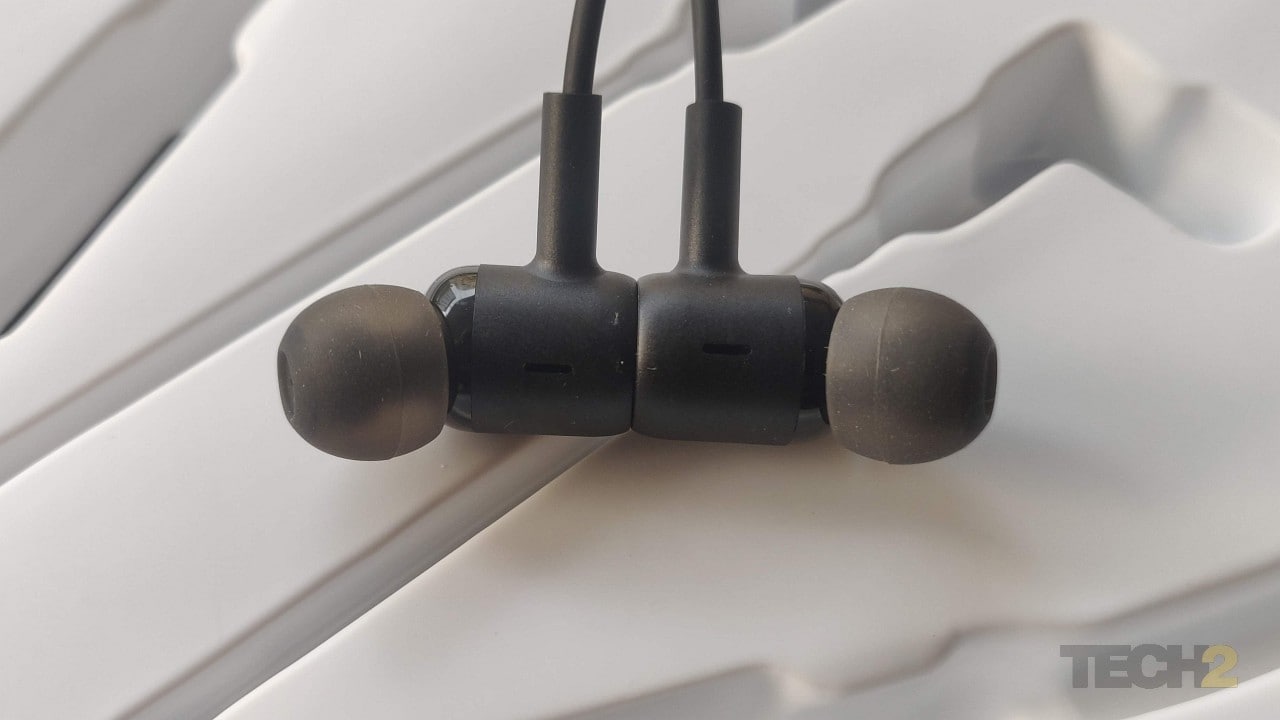
Redmi SonicBass. Image: Tech2/Ameya Dalvi
On the bright side, the neckband is quite light, the buds feel comfortable in the ear and the silicone eartips offer decent passive noise isolation. The build quality is a bit too plasticky for my taste, but acceptable for the segment. I probably expected better because the Redmi Buds S from the same company that can be purchased for just Rs 500 more had a far better build. These earphones are IPX4 rated sweat and splash resistant, and can be taken to the gym, where the extra bass might come in handy.
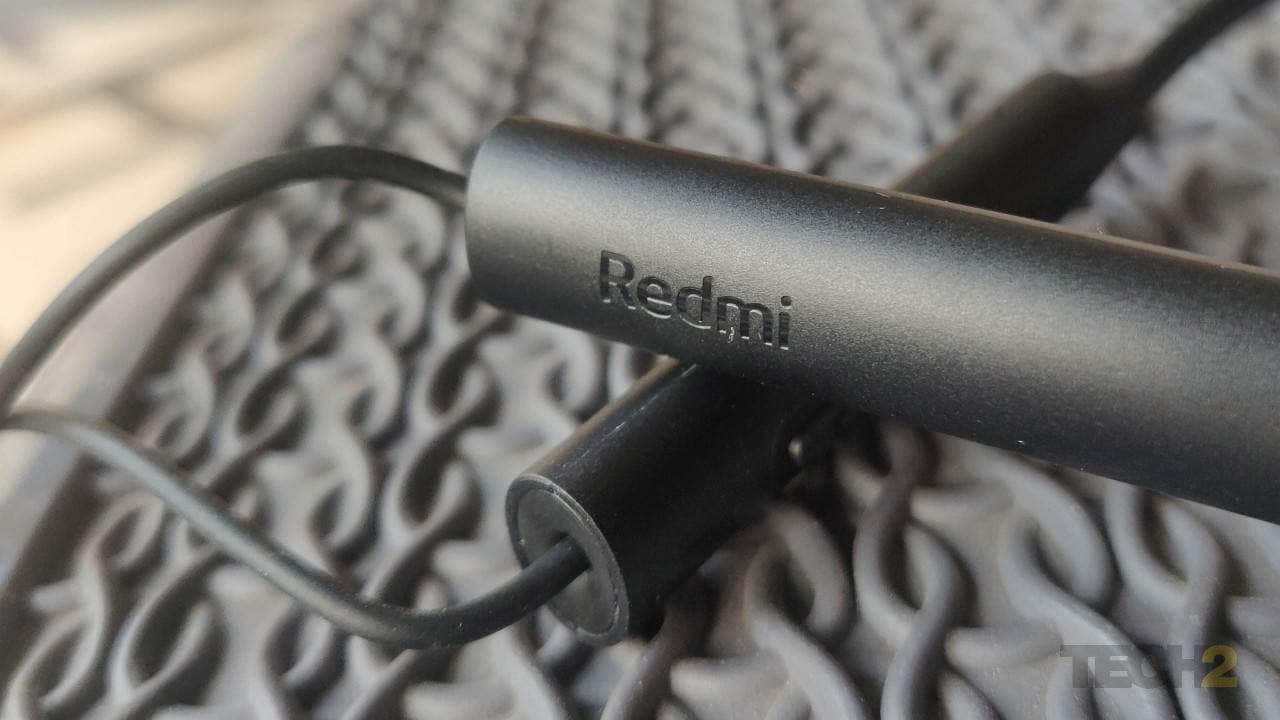
Image: Tech2/Ameya Dalvi
The inline control module lets you play/pause audio, jump to the previous or next track and answer/end/reject calls, thus eliminating the need to go looking for the phone to do any of that. The company claims a battery life of up to 12 hours on a full charge. In reality, I got close to 10 hours, which is pretty decent for the segment. It takes about two hours to charge the Redmi SonicBass fully using a standard micro USB charger. I prefer to see USB type-C charging ports on all smartphones and wireless earphones in 2020, but given its price tag, I will let it slide. The company should have cared to bundle a micro USB cable in the package though.
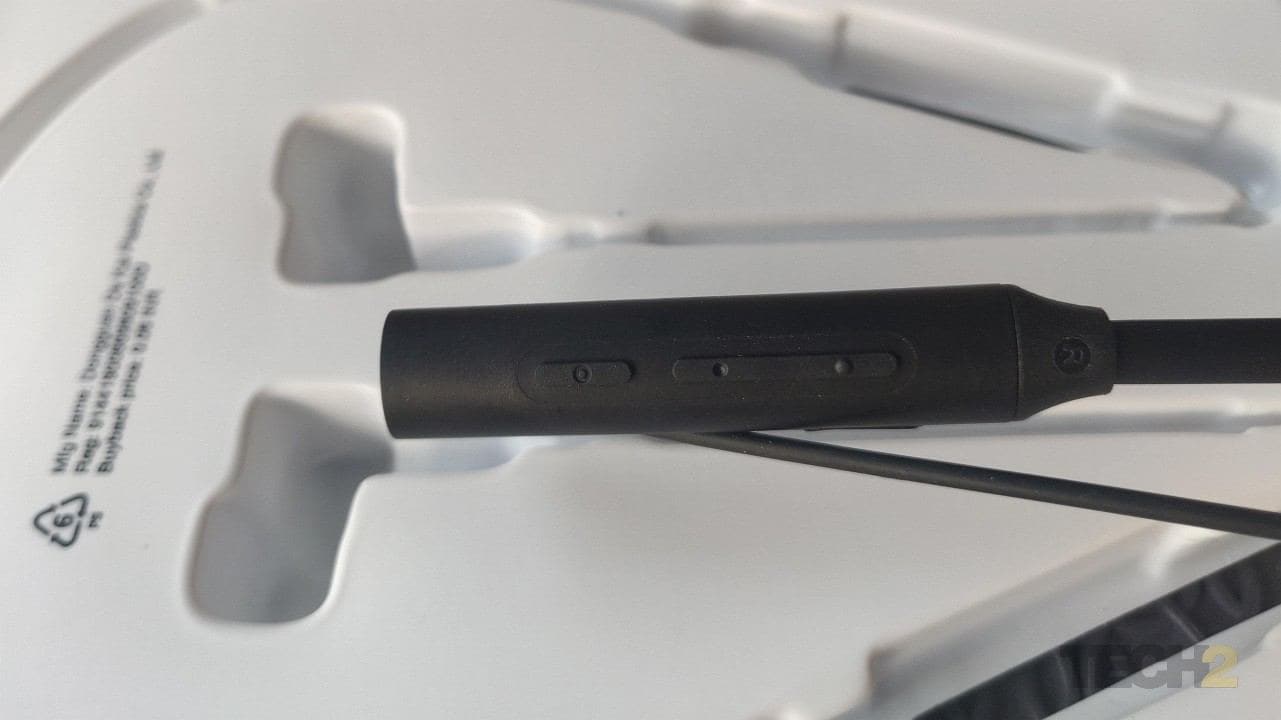
Image: Tech2/Ameya Dalvi
The call quality here is below par. The person on the line sounds a tad boomy, and you aren’t clearly heard by the other person either. To make matters worse, the microphone picks up a lot of background noise when outdoors, making the conversation far from pleasant. The wireless range is decent though, with the earphones managing to retain a strong connection up to 8 metres without any obstruction in sight, and half of that with a concrete wall in between.
The Redmi SonicBass wireless earphones are priced at Rs 1,299 with a one year warranty, and often sell for their introductory price of Rs 999. This product is far from perfect with average sound quality, below-par call quality and plasticky build. But then, we are talking about a wireless neckband priced close to Rs 1000, and some of its shortcomings can be overlooked. Buy this only if you are on a really tight budget, and enjoy bass-heavy sound. Else, you have much better alternatives in the form of Infinity (JBL) Glide 120/N120 and pTron Zap that offer much better sound quality at a similar price point, with the latter offering twice the battery life too. Alternatively, you can buy the Redmi Buds S (TWS) for just Rs 500 more; they sound a lot better than the Redmi SonicBass as well.
Pros:
- Lightweight and comfortable to wear
- Decent battery life
- IPX4 sweat resistant
- Inline control pod lets you access all playback functions
- Quick and easy to pair
Cons:
- Average audio quality
- Excessive bass overpowers other frequencies
- Plasticky build
- Poor call quality
- Micro USB charging port; charging cable not bundled
Rating: 3.3/5
Price: Rs 999 to 1,299
Oppo Enco W11 TWS Earbuds Review

Oppo Enco W11. Image: Tech2/Ameya Dalvi
I was pretty amazed when I looked at the spec-sheet of the Oppo Enco W11 TWS earbuds given its sub-2k price tag. It boasted of touch controls, IP55 rating, 20 hours of battery life, support for AAC codecs and more. I had no choice but to explore further. These are well-built true wireless earbuds with 8 mm dynamic drivers and silicone eartips that offer decent passive noise isolation. They weigh less than 5 grams each and fit snugly into the ear. These Bluetooth 5.0 buds are easy to pair, and there was no issue with the wireless range that was close to 10 metres with a clear line of sight, and 6 metres with a concrete wall in between.
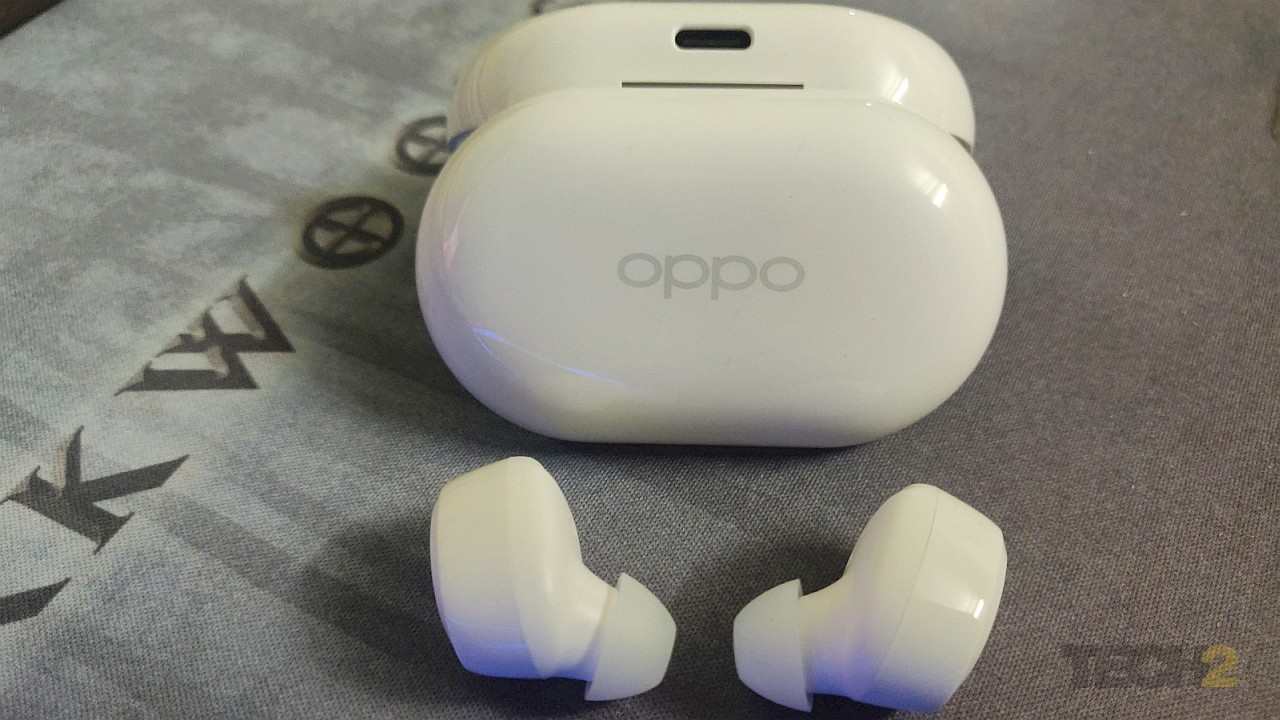
Image: Tech2/Ameya Dalvi
You get touch controls here, which you rarely see on earbuds in this budget. What’s even better is that they are quite responsive and work well. A single-tap on either bud lets you play/pause the audio, a double-tap on the left or right bud lets you jump to the previous or next track respectively. Double-tap also lets you answer or end calls. A long touch lets you decrease or increase the volume, while triple tap brings up the voice assistant. While most of the controls function as expected, you do accidentally end up pausing the audio when trying to adjust the earbuds. This is the reason why a lot of touch-enabled TWS buds do not assign any function to single-tap.
The sound quality of these Oppo buds is quite good for the segment, with surprisingly good detail in the sound. The sound signature is slightly on the brighter side. The mids are fairly detailed with clear vocals and decent instrument separation. The lows are tight yet punchy, and not unduly boosted; some may find the bass inadequate though, but that’s mainly because of the pronounced highs. The highs can get a bit too sharp for comfort in certain tracks, and set in a bit of fatigue earlier than usual. The soundstage and imaging are acceptable for the segment, and so is the overall sound output. As I mentioned earlier, you get support for AAC codecs.
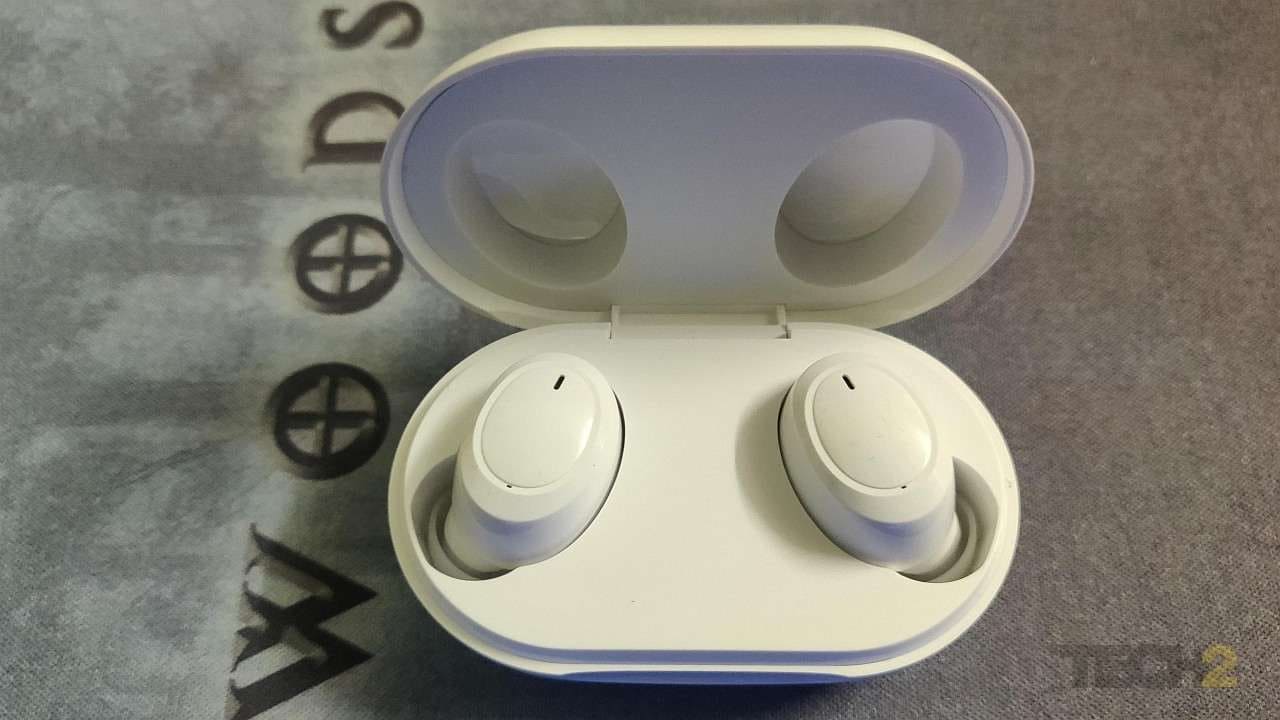
Image: Tech2/Ameya Dalvi
Oppo claims a battery life of 20 hours with the charging case, and the actual figure wasn’t too far from that. The battery lasts for about 4.5 hours of audio playback for the buds, and the compact charging case manages to charge them thrice more. Thus, you get an overall battery backup of around 18 hours, which is more than acceptable for this budget. Another good part being, the case has a USB type-C port, and the necessary cable is bundled. It takes anything between 90 minutes to two hours to charge it fully, depending on the charger you use.
The Oppo Enco W11 are pretty decent when it comes to call quality, with both parties being heard loud and clear when indoors. Outdoors, a bit of ambient noise seeps through, but you are still audible and the conversation isn’t impacted in a big way. They fit well in the ear and generally do not pop out during a jog or a workout. The buds are IP55 rated dust and water resistant too, so you need not worry about sweat damaging them, or even a light drizzle for that matter. Again, it’s great to see an IP55 rating in this budget where IPX4 is a luxury.
The Oppo Enco W11 launched for Rs 2,499, but now sells for a shade under Rs 2,000 with a one year warranty. For that price, you get a TWS pair with good sound quality, battery life and an impressive feature set that’s hard to find in this segment. Though it has a lot going for it and is almost unbeatable at this price point, this pair is not for those who like thumping bass. If you are one of those, you will need to bump up your budget by at least 1K to get your hands on the OnePlus Buds Z (TWS) or opt for a wireless neckband like the OnePlus Bullets Wireless Z for 2K. For the rest, Oppo Enco W11 offers excellent value for money at Rs 1,999.
Pros:
- Excellent value for money
- Good build, comfortable fit
- Impressive sound quality for the segment; support for AAC codecs
- Good battery backup and USB type-C charging port
- IP55 rated dust and water resistance
- Responsive touch controls with access to all playback functions
- Decent call quality
Cons:
- Highs tend to get a bit too sharp in certain tracks
- Some may find the bass a little inadequate
- Prone to accidental touch control gestures
Rating: 4/5
Price: Rs 1,999
Post a Comment